This will be good news for Miyazaki cult people who are in doubt of Bloodborne hallucinogenic horrors and Dark Souls grimdark fantasies that the studio is based on. In Sekiro, you will not suffer bankruptcy as a ghoulie cuts you down a stone throw from the bonfire, or collect blood echoes and souls, or even dump those resources into opaque leveling thresholds. Nevertheless, you still pass away.
In this game, you will control a shinobi that is in debt to a young liege. The progression scheme opens up a Japanese action game rather than an RPG game. You will add new skills and lead to and create your own arsenal in a long and intersected skill tree. This possibly reminds of God of War, Nioh. After death, you can revitalize yourself once or twice. It will extremely helpful as you are in some most difficult encounters of the game.
Sekiro’s revival and linearity progress raised some conflicts inside SoulsBorne community. If a Miyazaki game without constant corpse-runs would be quite soft for players. I was wondering why From Software could have done that before playing this game. Then, I spent 2 hours playing Sekiro, being killed about one trillion times by the Chained Ogre, which just a mini-boss. I definitely had put those old fears to go to sleep after that.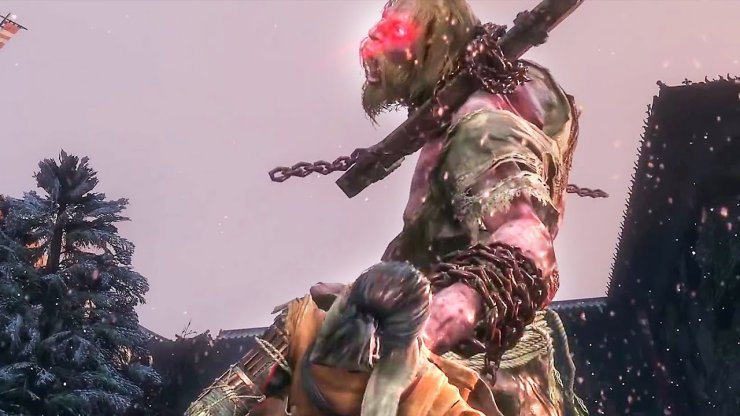
The Chained Ogre is incredibly powerful
You will meet the Chained Ogre in the first chapter in hell, after the introduction. He is the hell gatekeeper and he will keep the hell away from you as Dark Soul’ Capra Demon and Bloodborne’s Father Gascoigne did before. He has red eyes with a giant beard which is directly plucked from the severe classic Japanese art fighting scenes. But his moveset is resembling Macho Man Randy Savage. He also got diving tackles, big boots, and huge elbow-drops. I don’t understand why he has never beat me by a piledriver. Despite his size, he is surprisingly fast, which require a lighting reflex. A single hit of him would consume half of your lifebar. If you are caught unfortunately among his bigger moves, you are definitely going to die with not much left in your lifebar.
Sekiro’s key tension turns out to be clear as I was pushed into the dirt continuously. It is because the game doesn’t make you feel stress with harsh death punishment. Instead of buffering your mortality by any revitalization ability due to an extreme fragile protagonist. In fact, you can’t bear such many hits without falling off the ground. You also can’t depend on any blood vial farming or kindled bonfires. The Healing Gourd in which the game’s Estus Flask stand appear with only one single charge. From Software wants us to suffer death several times so that they give us some leeway around death.
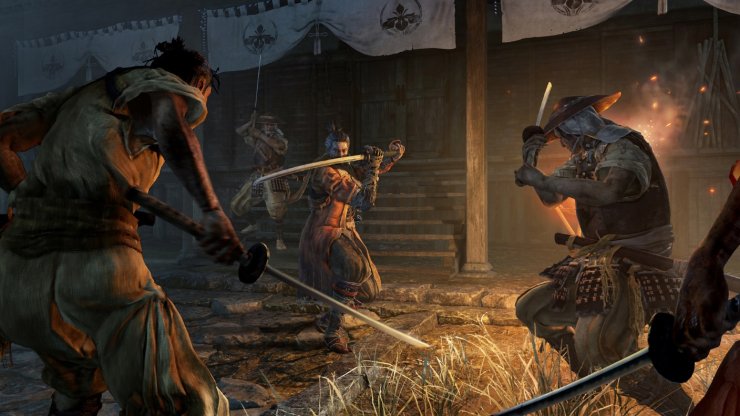 The shinobi is extremely dangerous will full equipment
The shinobi is extremely dangerous will full equipment
I was amazed by the fast aggressive Bloodborne in 2015. It was way more intense to other Souls games that From had published. It proves that Hidetaka Miyazaki, the director, is a professional in controlling. It seems like he enjoys creating new mechanical systems for his players, which are required years to be good at.
The game is distinct from Dark Souls and Bloodborne. There are no lengthy wind-ups in battles and stamina bar. The shinobi is extremely dangerous. The shinobi is equipped with a deadly grappling hook and stealth attacks that is one hit one kill. He also wears an axe to destroy the shield, some quicksilver shurikens and clockwork prosthetic arm outfitted with flamethrowers. These strikes would be deployed insanely quickly. Instead of ducking away, you will be in ultra-close quarters in every Sekiro battle in order to recharge your attacks.
For a decade, this is the first time you are motivated to attack directly to your rivals due to damage circumstances made by posture breaks, in other words, guard breaks. You will be told the percentage of breaking through enemies’ firm swordsman stance as you face off with them. It will help you to open them up, then blowing them with devastating kill series. If you are kept with them for a long time, it will waste your time and energy as their lifebar will be refilled automatically. You will also be equipped with the same dynamic in your own final.
There is a parry for you too. Its function likes the faster version of Dark Souls. You can create significant damage on your enemies if you calculate the time using the parry well along with an instant attack. Instead of some particular hits that highlighted with scarlet and Japanese symbol for “DANGER”, everything is blockable. If you are in those exceptional situations, you could twist to a roll, a dodge, or moreover, a jump. It will be a Neo-From-The-Matrix jump. This considered as the most flexibility Form has ever created.
After two hours of deeply enjoying the game, I barely discover just a surface of how the optimal combat is. Sekiro’s rhythm is tremendously fast. It will take some sessions to understand completely what the game’s demand is, just like God of War and Bloodborne. The struggling point is the reason for more and more aggressive and hawkish the Chained Ogre is as I attack him. There is no place for Lordran’s board-and-sword patience as it only causes the delay for an awkward deadly end.
 The Chained Ogre is becoming more and more aggressive as you attack him
The Chained Ogre is becoming more and more aggressive as you attack him
Souls still burn
The last suck out thing that was the lore of the game. From Software, narratives are practically complex beasts. I am looking forward to a video from VaataVidya after the launch of Sekiro, which will summarize the storyline of the game by various cutscenes. As I am the one beaming to Sekiro demo in Japan, I was revealed some interesting information about the storyline by From.
From Software is working on a game that embedded the closing stage of the Japanese Sengoku Period, somehow, it might miss some eldritch details of scale that From games want to gather. This could raise some concerns. Sekiro’s narrative is becoming personally and concentrates on the character. However, the developer made it clear enough that careful enigma of storytelling, which is the mixture of item description’s hints and carefully hidden Easter eggs in some particular sections of Sekiro, will be completed in its right place. It seems to be partly crucial and traditional for the developer.
You should not fret as you are interested in extraordinary detailed attention and hardly noticed flourishes. This is a relief for you if you had to experience Dark Souls.
I could say that there will be a basic similarity with Firelink Shrine, in which the characters that you have met in the game will build up their accommodation, as I didn’t discover any secrets myself. They have your back if you are keen on quiet moments in which you will be regaled with elliptical and curious dialogue with the weirdos.
In the peak of the preface, you battle with a samurai who take your child liege away from you, cutting off your arms for good measure. However, it doesn’t display in the cutscene. You are going to fight that samurai as you fight other bosses in Sekiro. You will be totally different from the combat system happening in this battle. You will lose an arm, having your little liege kidnapped. It is the motivation to move forward in all over the story. Feeling like you could win for sure if you understand what you were doing.
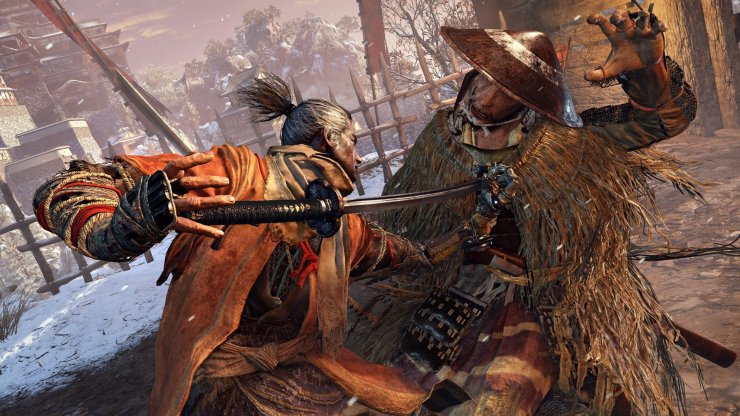 You will play your fight, not just watching cutscenes
You will play your fight, not just watching cutscenes
I asked the Activision about it, then thought I could be a huge spoil if he revealed that in the first 15 minutes, the main enemies could be slaughtered. However, it is the memory that I couldn’t stop thinking of from the week I played this game. From is a unique studio that could have plenty of ways to create one of a kind ideas and intense mysterious worlds. From Software are so interested in not giving any support; you have to gain enough insight to look at the real form of Yharnam or stumble into skeletons placed after Firelink. It is reasonable if the antagonist including the appearance of samurai is just a small edge of the iceberg. Surprise you is the core mission of Sekiro, and From games in general.
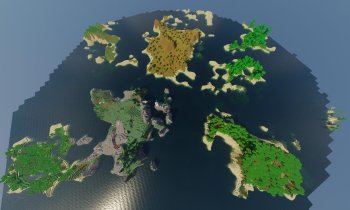
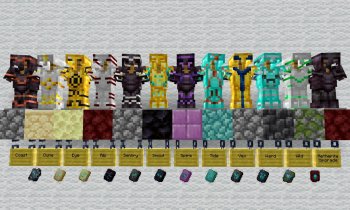








Comments